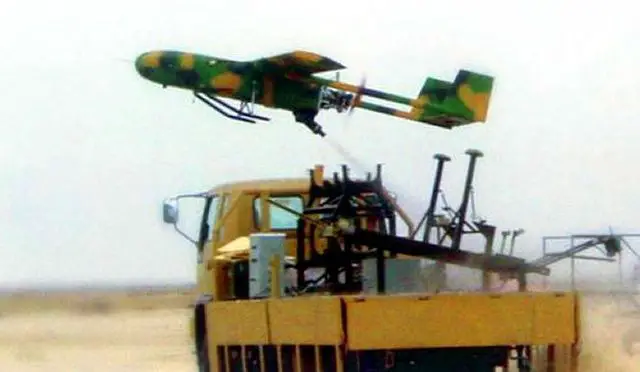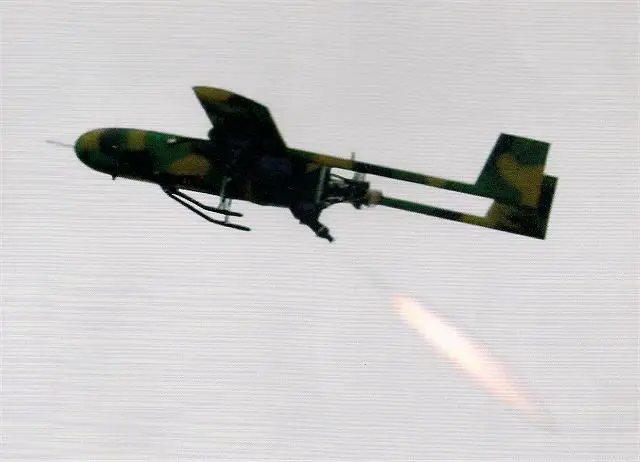| Design |
|
The CH-1 UAV design is based on a fixed-wing in twin-boom layout with two small tails at the rear. The two-blade propeller engine is mounted at the rear end of the fuselage. The CH-1 uses a parachute for autonomous landing.
|
| Mobility |
|
The CH-1 UAV is launched via a tactical military truck mounted catapult with rocketed assisted take-off. Propulsion of CH-1 is provided by a two-blade propeller driven by a pusher engine mounted at the rear end of the fuselage. It can flight at a maximum speed from 120 to 150 km/h with a maximum operation range of 100 km and altitude from 1,000 to 3,000 m.
|
| Payloads equipment |
The CH-1 UAV is fitted with a target reconnaissance/positioning system including a 2 in 1 photo-electric reconnaissance platform which is capable of all-weather reconnaissance. It can switch easily between visible light imaging mode and infrared ray imaging mode. The platform is mainly composed of a CCD camera/FLIR (Forward-Looking Infrared), laser geodimeter, stable platform, elevating device and target position solver. The CH-1 has a maximum payload capacity of 20 kg.
|
| Combat use |
|
The CH-1 UAV is mainly intended for reconnaissance and surveillance missions. The CH-1 is able to to fly at high altitude and at high subsonic speed and to perform the mission of high altitude photographic reconnaissance in day time.
|
| |
| Specifications |
| Back to top |
|
Type
|
|
Medium-range tactical UAV
|
|
Country users
|
|
China
|
|
Designer Company
|
| AMLI |
|
Payloads equipment
|
|
CCD photo equipment, CCD digital scanning photogrammetry system, multi-spectrum CCD digital camera system
|
|
Operator
|
|
1
|
|
|
Altitude
|
|
1,000 to 3,000 m
|
|
Weight
|
|
130 kg take-off
|
|
Speed
|
|
120 - 150 km/h
|
|
Endurance
|
|
6 hours
a
a
|
|
Dimensions
|
|
Lenght: 3.75m; Wingspan: 4.40 m; Height: 0.87 m
|
|
|
| |





























